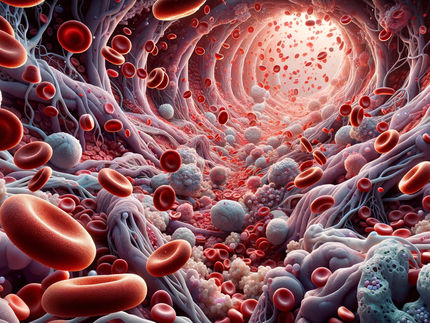New receptor found on scavenger cells
How adenoviruses invade the immune system of mice
Adenoviral infections have a mild disease progression in healthy people, but it can be dangerous for immunocompromised people. If a patient is infected with the virus and gets a bacterial infection on top of it, it can lead to an excessive inflammatory response known as a cytokine storm, an overreaction by the immune system leading to high concentrations of proteins that promote inflammation. Many patients do not survive this crisis. Mareike Maler from the University Hospital Freiburg, Prof. Dr. Marina Freudenberg from the Department of Pneumology at the University Hospital Freiburg and the BIOSS Centre for Biological Signalling Studies, Dr. György Fejer from the University of Plymouth, England along with Prof. Dr. Wolfgang Schamel from the Department of biology and the BIOSS Centre for Biological Signalling Studies have now identified an important adenovirus receptor in macrophages of mice. The receptor “MARCO“ enables the adenoviruses to invade macrophages, important immune cells responsible for detecting and destroying pathogens.
Previous studies with epithelial cells from skin and gland tissue showed that the viruses bind to the cell-surface proteins called integrins and to CAR, the receptor for coxsackievirus and adenovirus. Biologists have been searching for the adenovirus receptor in immune cells since the 1990s. The research in Freiburg sought to clarify how adenoviruses attack cells of the immune system; that is, on which receptors the viruses on the cellular surface land, in order to invade the cell. The clarification of this question is of particular interest because the pharmaceutical industry has recently shown interest in using adenoviruses in gene therapy to channel genetic information into human cells. During the first clinical trials, however, some patients showed symptoms of a cytokine storm, suggesting that they may have contracted a bacterial infection.
Up to now, the scavenger receptor MARCO was viewed mainly as a so-called pattern recognition receptor with which the macrophage recognizes bacteria. However, the new findings prove that the receptor has an additional function in fighting viral pathogens. MARCO is probably fundamental for activating macrophages, for instance, in order to produce inflammation-promoting cytokines. In addition, the researchers demonstrate that macrophages derived from bone marrow precursor cells are far less infected with the virus than the macrophages in the lung. The reason for this is partly because the bone marrow macrophages usually lack MARCO and therefore cannot effectively be attacked by the virus.
After the discovery of these scientific findings, it is now time to conduct testing on humans. Although the receptor MARCO is also found in humans, it is still not clear if the virus interacts with the same receptor in humans. Nonetheless, the study has provided information on how macrophages fight viruses and that they have the potential to activate a cytokine storm in humans. In the future, medication could be used to block the receptor MARCO, thereby avoiding the cytokine storm.
Original publication
Other news from the department science
Most read news
More news from our other portals
See the theme worlds for related content
Topic world Gene therapy
Genetic diseases once considered untreatable are now at the center of innovative therapeutic approaches. Research and development of gene therapies in biotech and pharma aim to directly correct or replace defective or missing genes to combat disease at the molecular level. This revolutionary approach promises not only to treat symptoms, but to eliminate the cause of the disease itself.

Topic world Gene therapy
Genetic diseases once considered untreatable are now at the center of innovative therapeutic approaches. Research and development of gene therapies in biotech and pharma aim to directly correct or replace defective or missing genes to combat disease at the molecular level. This revolutionary approach promises not only to treat symptoms, but to eliminate the cause of the disease itself.






















































